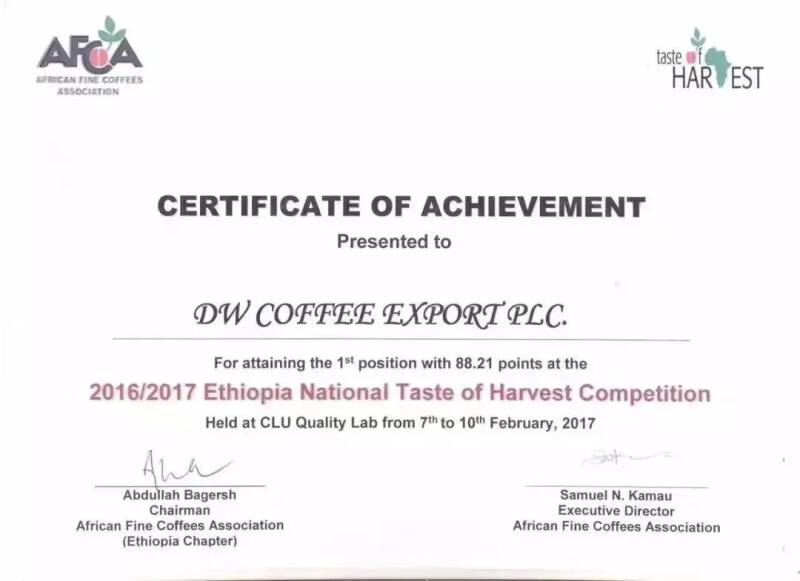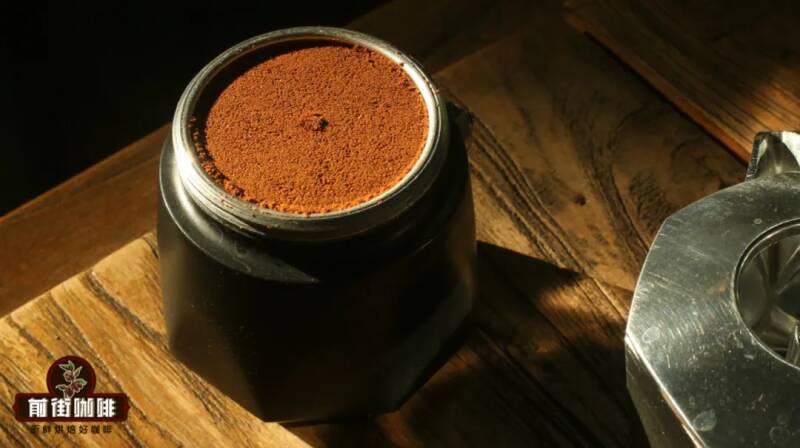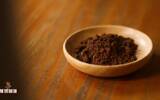Are Huakui coffee beans a substitute for Rose Summer? Why is Huakui Coffee called Huakui? Can a mocha pot extract lightly roasted coffee beans?
It can be said that nearly 70% of the inquiries about mocha pots received in the front street backstage asked how to use mocha pots to extract shallow roasted coffee beans. As the saying goes: radish and cabbage, each has his own love! Not all friends like to use deep-roasted beans to make coffee, so they often choose shallow baked beans with outstanding flavor to make mocha pot coffee. As a representative of high performance-to-price ratio in a group of shallow baked beans, Sakuran naturally becomes the first choice for most friends because of its suitable price and outstanding flavor.
But after trying, many friends found that the extracted Sakui coffee is either tasteless or full of acidity. It is not in line with the cup of "flower-flavored" coffee in the minds of friends. To this end, these friends found Qianjie and asked how to use the mocha kettle to extract the flavor of Sakui! Therefore, today Qianjie would like to share how to use a mocha kettle to extract the "Hua Kui flavor" of Sakuran. Before that... The old rule, first introduce to the new friends what is Sakui, what is "Hua Kui flavor".
What is Sakuran? Huakui is a bean from the Humbera region of Ethiopia. Qianjie believes that many friends first began to know Sakuran in the coffee competition in 2017, when contestants used Sakuran to beat many rosy summers and achieved excellent rankings. Therefore, this made Sakuran's reputation soar in a short period of time and gained a lot of "fans". But did you know that before Sakuran became the "Sakuran", this bean actually won the TOH competition held by the African Coffee Association in Ethiopia. It was precisely because of its victory that prompted a raw bean manufacturer in Beijing to decide to start and name it Sakuran. The intention is to "the head of a hundred flowers, the beauty of the crowd".

It is often said in Qianjie that Sakui also strongly suppresses the meaning of Rose Xia. Because Rose Xia was originally called "Geisha" and means "geisha" in translation. Geisha is a profession in Japan, and Sakuran is a leader in this profession. Later, because Sakuran has achieved good results in various competitions, such an explanation is deeply rooted in the hearts of the people. At first, Huakui was only produced by the Buku abel processing plant in the town of Dimtu, Humberra, but with its growing fame and market demand, DW began to expand its production scale and put the production areas around the Buku processing plant into the production of coffee beans. They are Buku Saysay, Haro Soresa, Tirtiro Goye and Seke Bokosa. They are all located in villages and treatment plants in the town of Dimtu, which is about 4 kilometers away from the Buku treatment plant.
However, I believe everyone knows that coffee is a crop that depends on the sky to eat. As a result, the final taste of coffee varies from year to year because of the climate change of the growing environment and the differences in the details of the process. So is Sakuran! At the age of 18 years, it was found that the taste of this year's Sakuran was different from that of Sakuran, which was brilliant in major competitions last year. Therefore, in order to make a difference with the original Sakuran, the domestic raw bean trading company began to set an annual limit for Sakuran's exclusive batch number-X.0. Starting in 2017, the X.0 suffix will be added to the output of Sakuran every subsequent year. For example, if the Sakuran produced in 18 years is the second batch, then it is Sakuran 2.0, and the Sakuran produced in 19 is the third batch, then it is Sakuran 3.0 and 3.1.
This year is the eighth year of the production of Sakuran, so this year's suffix is: 8.0. In this way, buyers can clearly know which year the Sakuran batch they bought came from and whether it is the coffee of the season.
What is the taste of Hua Kui? Sakuran is famous not only because of the fame brought to it by the competition, but also because its flavor is very special, which is different from the traditional Sidamo flavor. The traditional Sidamo flavor is characterized by the flavor of mature tropical fruits such as citrus, pineapple and mango, while Sakuran has a rich sweet flavor such as cream and strawberries. When we put these flavors together, it is the so-called "Hua Kui flavor".
How to use mocha kettle to extract the "Hua Kui flavor" of Sakui? Back to the point, the reason why many friends can not extract the "Hua Kui flavor" of Sakui is because they have neglected a main point! That is, Huakui is a light-roasted coffee bean, but it uses the same amount of grinding and powder as deep-baked beans. Compared with deep baked beans, shallow baked beans have a lower degree of expansion and brittleness. Therefore, under the same grinding and the same amount of powder, the resistance of pressed powder formed by light baking coffee powder is not as great as that of deep baking, because there are more cracks and the infiltration speed of water is faster. Therefore, the final extracted coffee will be due to the lack of contact time between powder and water, basically is the acid taste of insufficient extraction. If the mocha kettle is directly in the state of "spray" when it comes out of the liquid, then this is the case! )
So in a situation like this, we can have different solutions according to different needs (please move to this side for details of the operation of the mocha pot, and Qianjie will not elaborate too much here). The first is to adjust fine grinding or increase the amount of powder! If you are a friend who uses a bean grinder to grind coffee powder, then fine grinding is naturally the best choice! Move the scale to the fine side by 2 frames, and then extract with the same amount of powder, the pressed powder will become tighter due to the decrease of the particle size of the coffee powder, the resistance will naturally be increased, and the contact time between the powder and water can be prolonged. If we are friends who buy substitute grinding powder, we need to increase the resistance of pressed powder by increasing the amount of powder, because the grinding can not be further refined, so we can only increase the resistance of pressed powder through accumulation. (exaggeration)
Another way is to control the heat, turn down the fire when the mocha pot comes out, and remove the fire from the mocha pot when the coffee liquid oozes half of the cup, reducing the rate of water vapor generation, so that the contact time between the water and the coffee powder can be appropriately prolonged. Of course, the first two factors are prerequisites that need to be met.

When we adjust it, the hot water can exert the maximum ability to extract. The fully extracted Sakui coffee will naturally not have a sharp sour taste, and the "floral flavor" such as strawberry, cream and citrus can be interpreted.
-END-
Important Notice :
前街咖啡 FrontStreet Coffee has moved to new addredd:
FrontStreet Coffee Address: 315,Donghua East Road,GuangZhou
Tel:020 38364473
- Prev

What does mocha coffee mean? What is the method of making salty mocha coffee? What is the difference between a mocha and a latte?
As we all know, in the Italian coffee system, mocha refers to a milk coffee with chocolate added. Because of the existence of chocolate, the taste of coffee becomes richer, and because of the existence of chocolate, the aroma of coffee becomes sweeter. Having a cup of hot mocha in autumn and winter is simply too heart-warming! but in
- Next

Sudden floods in São Paulo State, Brazil! Coffee season is in distress
According to Brazilian media reports, several southern Brazilian states have been hit by storms and thunderstorms in recent days, the most serious of which are São Paulo and Rio de Janeiro states. This storm has caused many casualties, traffic chaos and serious damage to these areas. According to statistics, a total of three people have disappeared and eight have died. according to
Related
- What effect does Italian American coffee with filter paper have? Will coffee taste better if it is put on filter paper at the bottom of the powder bowl?
- What is the color difference in coffee beans? What are the characteristics of honey processed coffee beans? Why are the anaerobically treated coffee beans uneven in color?
- How does novice Xiaobai quickly get started and make coffee? Newbies learn to make coffee by hand and share the specific steps and process process!
- Costa tea has a shelf life of 100 years?! Expert: Unable to verify
- It's a huge uproar! American milk addition was rejected by Manner employees?!
- Mocha pot coffee bean recommendations| How fine and how much powder should be used for grinding? What parameter ratios do I need to use to make milk with Mocha pot coffee?
- What are the characteristics of the world's top ten coffee beans treated with Costa Rica honey? How to make black honey kadura from Tarazhu Pilon Processing Plant taste good?
- How to make deep-roasted coffee? What grinding water temperature does authentic Jamaica Blue Mountain No. 1 coffee use to brew it well?
- Selected high-grade rose summer coffee flavor tasting guide Why Panama rose summer has the aroma of flowers and fruits
- What equipment does a novice Xiaobai need to buy to learn to make coffee? Filter cup electronic scale bean grinder manual flushing pot purchase guide

